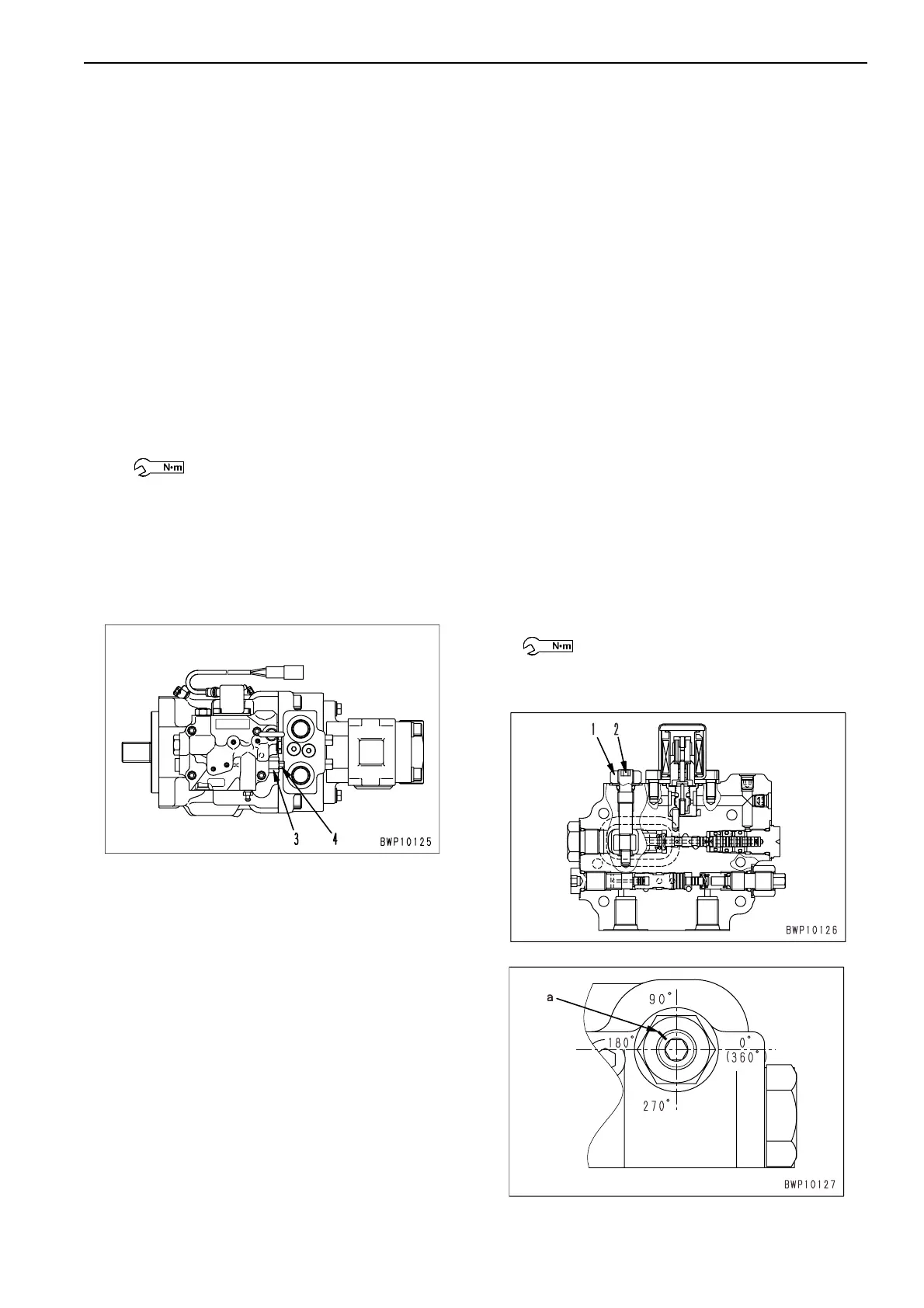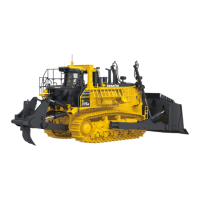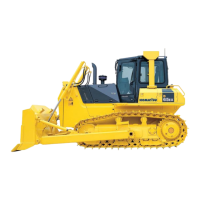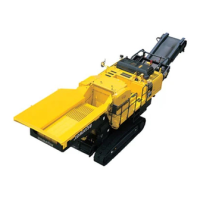PC58UU-3
20-115
b
TESTING AND ADJUSTING LS DIFFERENTIAL PRESSURE
Adjusting
1. Adjusting LS valve
★
If the LS differential pressure is abnormal,
adjust the LS valve according to the follow-
ing procedure.
1) Loosen locknut (3) and rotate adjustment
screw (4).
★
As the adjustment screw is
•
rotated clockwise, the pressure is
heightened, and if it is
•
rotated counterclockwise, the pres-
sure is lowered.
★
Quantity of adjustment per turn of
adjustment screw:
1.27 MPa {13 kg/cm²}
2) After adjusting, tighten locknut (3).
★
After adjusting, measure the LS differ-
ential pressure, referring to Measuring
described above.
★
When loosening or tightening the lock-
nut, secure adjustment screw (4) with a
spanner so that it will not be dragged.
ADJUSTING PC VALVE
★
When the load is increased, [the engine speed
may lower] or [the engine speed may be nor-
mal and working speed may lower]. If this trou-
ble occurs and the pump discharge and LS
differential pressure are normal, adjust the
pump PC valve according to the following pro-
cedure.
★
In which direction the adjustment screw should
be rotated to increase the torque is unknown.
Accordingly, monitor the engine speed when
rotating the adjustment screw.
1. Loosen locknut (1) and rotate adjustment screw
(2).
If [the work equipment speed is low], turn
adjustment screw (2) to the [counterclockwise]
(to increase the pump absorption torque). If
[the engine speed lowers], turn adjustment
screw (2) to the [clockwise] (to reduce the pump
absorption torque). Limit the adjustment range
to ± 180° from the position for shipping.
★
Since the position for shipping is not
punched, make match marks (a) before
adjusting.
2. After adjusting, tighten locknut (1).
Locknut:
27.4 ~ 34.3 Nm {2.8 ~ 3.5 kgm}
Locknut:
27.4 ~ 34.3 Nm {2.8 ~ 3.5 kgm}

